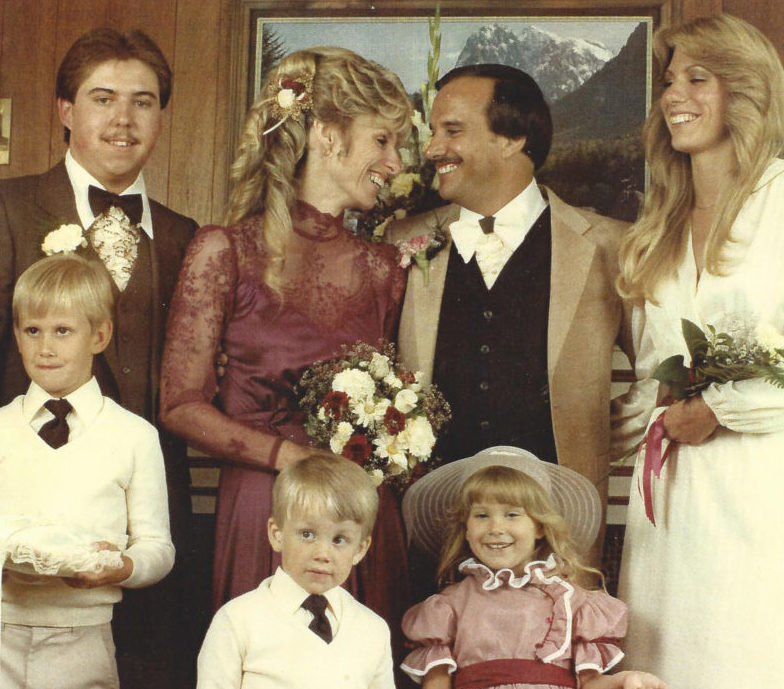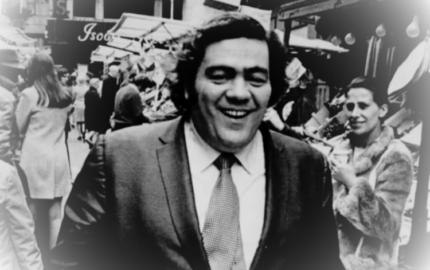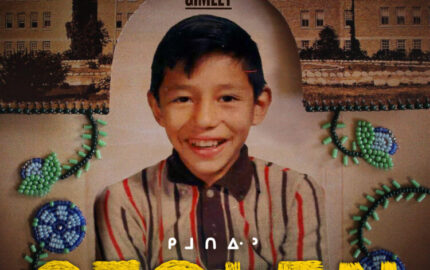In the opening of Maurice Chammah's story “The Accusation,” jointly published by Esquire and The Marshall Project, we meet Katie Spencer Tetz, a 25-year-old woman who learns that her father is getting out prison. He's been locked up for nearly two decades for brutally molesting her and her siblings. We're not surprised when she starts sobbing, but we soon realize her feelings are more complicated than we'd imagined.
It turns out that her father, Ray Spencer, is being released because of revelations that the investigation into his supposed crime had been deeply flawed. Katie and her brother, Matt, had spent years trying to understand why they had no memory of being abused as children, Finally, they had signed affidavits declaring that their father was innocent.
Chammah has previously written about wrongful convictions involving false accusations by children for The Texas Observer. In this piece, his goal was to focus less on the forensics and more on the emotional lives of the central characters. What's it like to be labeled a victim of child sexual abuse but question whether it ever happened? How does it feel to realize you may have falsely accused your own father and put him behind bars? What's it like to spend nearly 20 years in prison for a terrible crime you never committed? And is healing possible on the other side?
"I love finding cases that force you to question your assumptions about the best way to achieve 'justice,' and what that word even means."
After his story came out, Chammah was surprised at the number of readers and friends who said false accusations of child abuse had occurred in their families.
“It's not as common as kids who are sexually abused and too afraid to tell anyone,” he says. “But it does underscore the important role of investigators filtering out what's not real from what is.”
I asked him about how he approached weaving this narrative about memory, guilt and family. He says he expects it won't be his last story on this morally and emotionally complex topic.
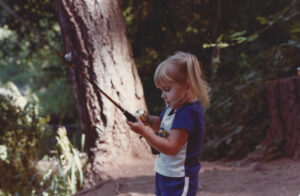
Why did you decide to start with Katie learning her dad was getting out of prison?
We initially tried to open with Ray leaving prison or Matt and Ray meeting for the first time. Ray obviously had the best memories of earlier events, because he was an adult. But in both cases, you needed so much detail to understand what was happening that it didn't make sense. Starting with Katie getting that phone call felt like a new approach and didn't take a lot of background. If she had been abused, the terror of finding out her dad was getting out of prison would make sense to anybody. But at the end of the opening, we flipped it: There's a lot more going on here. Readers may have encountered wrongful-conviction stories from the perspective of the person who was locked up, but I don't know of stories that start from the point of view of someone who is officially a victim but thinks it might not have happened.
How did you approach structuring the rest of the piece?
We basically did it chronologically. The idea was to hopscotch between the three central characters. Zooming in on Ray allowed me to tell the details of the case in terms of how he encountered them. Then jumping back to the kids allowed me to explain how things looked from their perspective as they were growing up. Once I got to the point where Ray was released from prison, it was pretty much a chronological account of them getting to know each other again and reconnecting as a family.
As far as what scenes to focus on, I used my intuition about which were evocative or illustrated the emotions in a particularly clear way: meeting for the first time as adults, Ray considering suicide after first arrested, Matt and Katie discussing whether the abuse ever happened. The important moments were the ones where the characters' perceptions of each other changed. I also focused on scenes where the characters tricked themselves for the briefest of moments: when Ray wonders if he did it, when Matt thinks maybe the abuse happened, when Katie ping-pongs between convincing herself that her mother must be right (that the abuse occurred) and that her brother must be right (that it hadn't). Those moments seemed tied together thematically: When we go through extreme situations, our minds play tricks on themselves to make sense of what's going on.
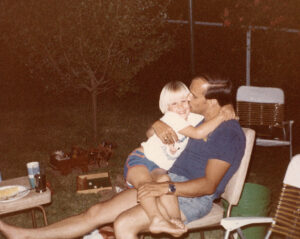
Was it challenging to convince Katie, Ray and Matt to talk? Once you did, how did you approach getting the detail you needed while asking them to relive traumatic memories?
It wasn't difficult to get them to talk. Partially, that's because they had filed a civil case against the investigators, and they felt media attention would be helpful in holding them accountable. They'd already been on “20/20” and had bared every detail in court subject to cross-examination by lawyers. I think they were very comfortable putting everything out in the open by the time I showed up. The difficulty was getting them to tell a story they'd already told with more detail.
I spent 20 or 30 hours interviewing them. I tried to ask questions in a way that would recall anecdotes from the past. The first time you interview someone in a story like this, you hear about feelings and emotions. But in order to bring it to life for a reader, you need more action — you need to know how those feelings are manifesting physically and verbally. If someone remembered being sad, I'd ask, “How did that sadness manifest? Did you have trouble sleeping?” Or when I talked to Matt about when he agreed to accuse his father, I'd ask: “What was going on in your head?” We'd go back over the emotions and the key moments in the history of the family.
How did you go about reconstructing scenes?
I would ask each of the people who were there what they remembered and put those together. If there was an inconsistency, I'd go back and ask them about it. I also consulted Ray's memoir. The principal characters also recounted a lot of the scenes in trial transcripts. Sometimes discrepancies would be illuminating. When Katie and Ray first saw each other, they didn't quite know what to say. Katie says it was because she was still feeling guilty, while Ray thought she might've still been unsure whether he'd done it. The fact that they have slightly different takes on the same moment is revealing.
What was your biggest challenge while writing the story?
Avoiding language that sounded like I was pretending to be a psychologist, using words like “behavior” and “false memory.” I also worried about being too sentimental. I usually like to let the moments speak for themselves, but in magazines like Esquire, you need to insert a little more writerly intensity and emotion, which was a hard balance for me to strike.
Cutting down the length was also tough. There was so much I found interesting that I didn't go into, such as how the wrongful conviction happened. But if you go down the rabbit hole of the investigation, you get away from the emotion of the characters.
"The first time you interview someone in a story like this, you hear about feelings and emotions. But in order to bring it to life for a reader, you need more action — you need to know how those feelings are manifesting physically and verbally."
You're on staff at The Marshall Project, and this piece was also published in Esquire. Can you tell me a bit about what The Marshall Project does and how its partnerships with other publications work?
The Marshall Project is a small nonprofit newsroom in New York that focuses on the U.S. criminal justice system. Part of the mission statement is to "sustain a sense of national urgency" around criminal justice, and a big part of that mission is trying to reach an audience that doesn't normally spend all day thinking about this area. One way we do that is by partnering with other publications that have a different audience from our own. The partnerships really vary: Sometimes, we report and write a story and then the editors approach publications they think might be interested in running it. Sometimes we run a short story on our site and it's picked up elsewhere, making us a sort of free wire service. (That's also how The Texas Tribune, where I used to write, worked.) Right now, I'm writing a story while co-producing a news documentary on the same subject.
The Spencer family story was different: My editor, Raha Naddaf, hatched the idea of a collaboration on this story with Whitney Joiner, of Hearst Digital Media (which produces online stories for Esquire), after I'd shared with them a handful of stories I had heard about featuring the “victims” in wrongful conviction cases. The process was: I'd write a draft, take edits from a TMP editor, then they'd share it with Hearst, and then another round of edits from them — rinse, repeat. It was a long process, probably longer than it would be at a single publication with a single editor, but the result was a story that traveled far and reached people who may not usually think about the criminal justice system.
When did you start getting interested in the topic of this piece? Do you plan to continue writing about wrongful convictions involving false accusations by children? What do you find compelling about those stories? What drives you as a writer in general?
I wrote about false accusations of sexual assault by children for twofeatures at The Texas Observer. When this new story came out, I realized how strange it is that I've focused on what feels like such a niche area. Such cases are a common phenomenon, but nowhere near as common as real instances of child sexual assault that go unreported. I think I've been compelled by these stories because they go to the heart of some tensions in our criminal justice system: the importance of “believing” people, the ways exterior forces can affect a case, the flawed nature of memory, the tendency to want to establish truth and how difficult that can be when humans are involved, etc. These sorts of cases combine crimes that are some of the most sickening and heinous to us culturally with witnesses whose reliability can be compromised, and thus they go to the heart of the system.
What I love about writing is the way it helps me (and hopefully readers) think more deeply about the way the world works. In my own case, the legal system has been the little corner of the world I've been exploring, and I love finding cases that force you to question your assumptions about the best way to achieve “justice,” and what that word even means. I think I'm attracted to criminal justice as a subject because there are no easy or obvious answers — justice itself is such a nebulous and yet deeply felt word — and so you can keep learning, re-framing, and re-thinking as you try to approach it.
